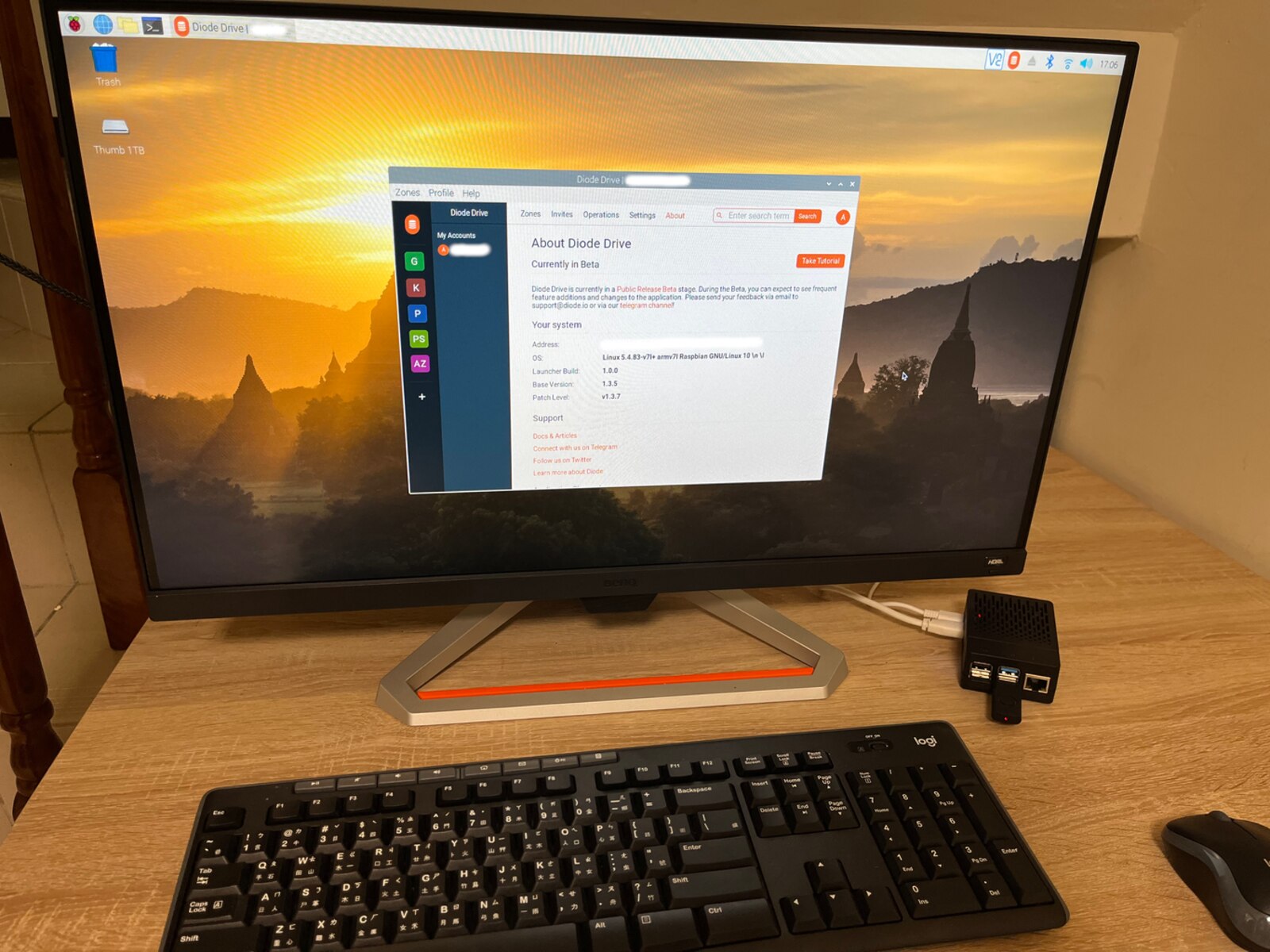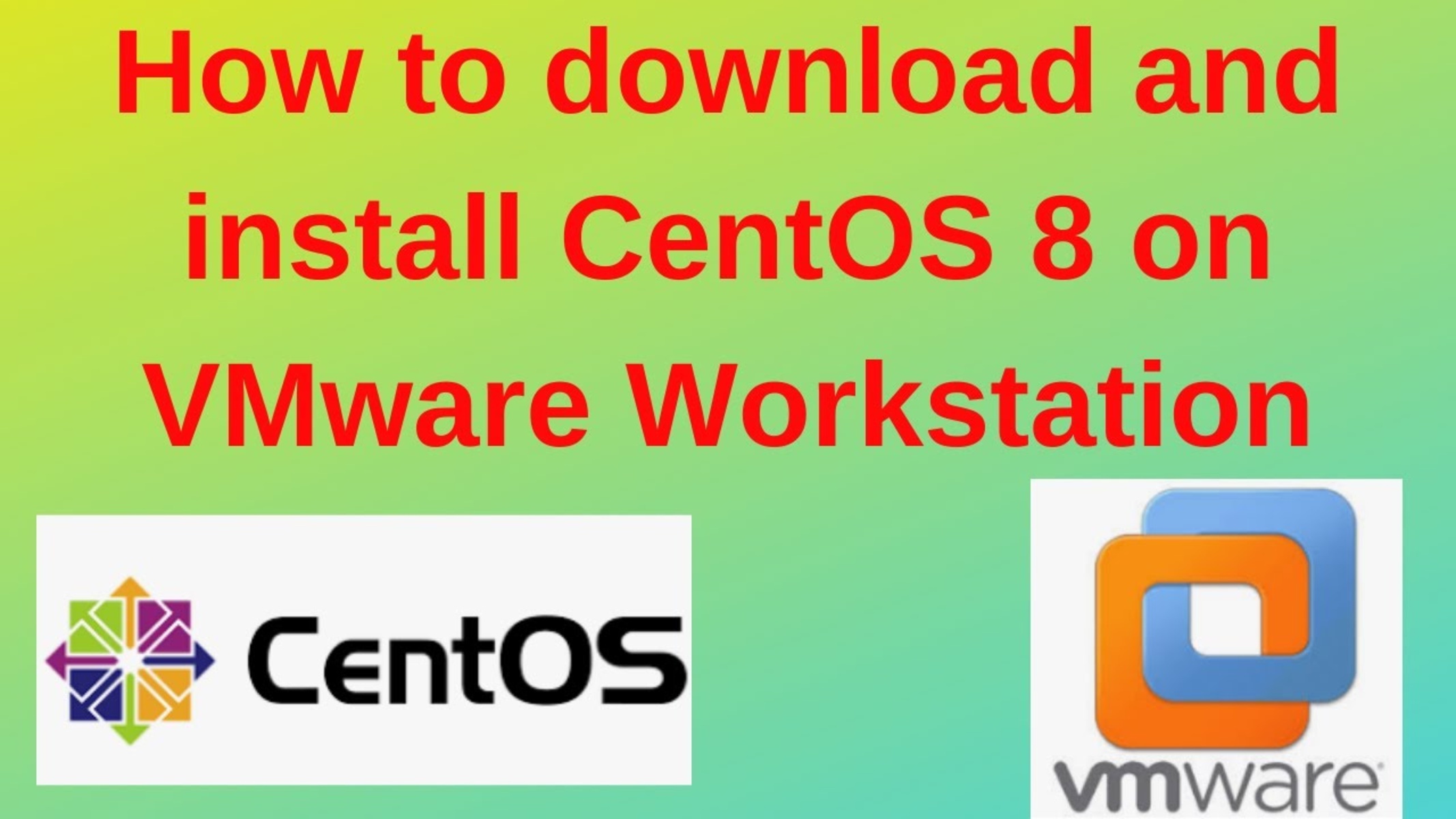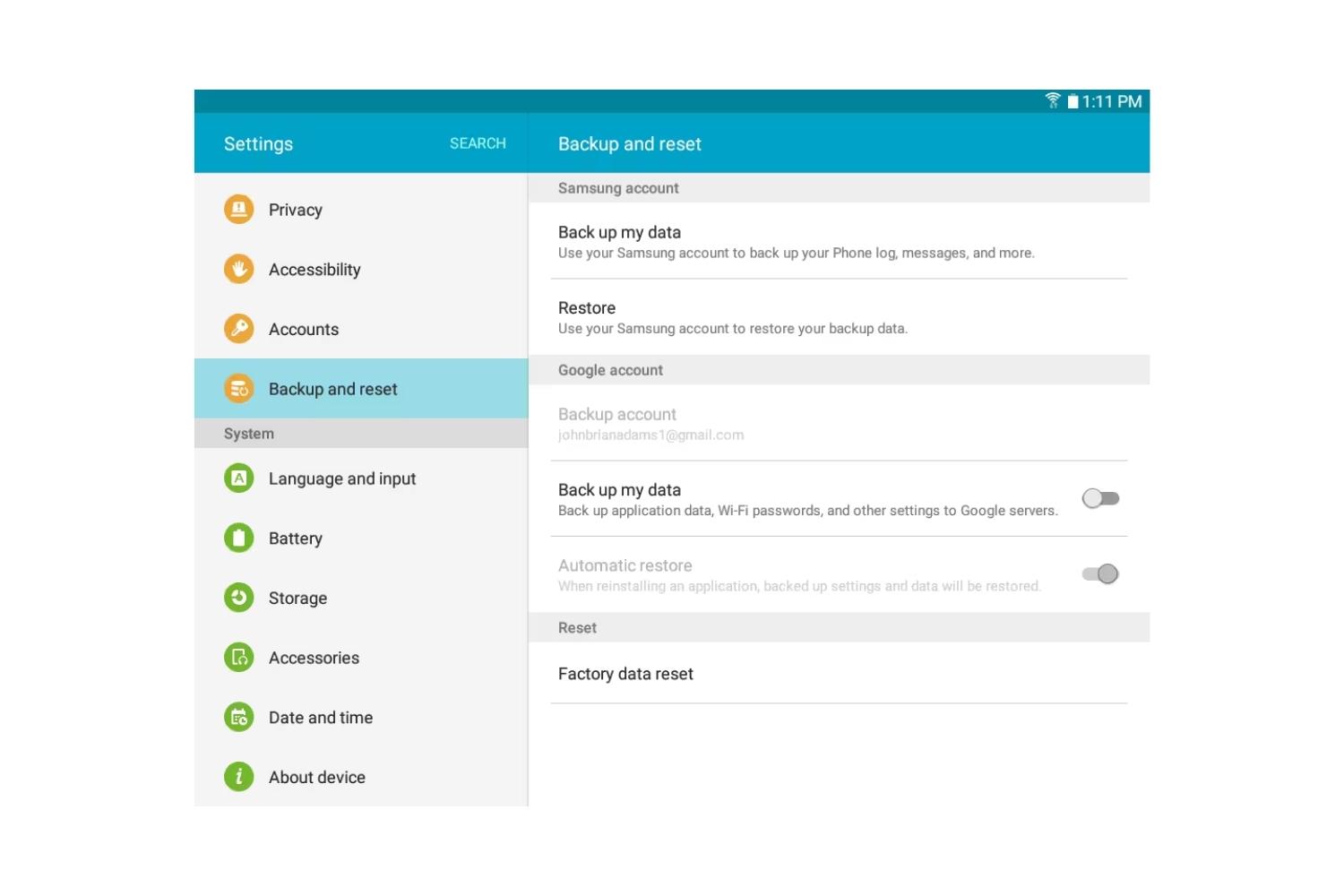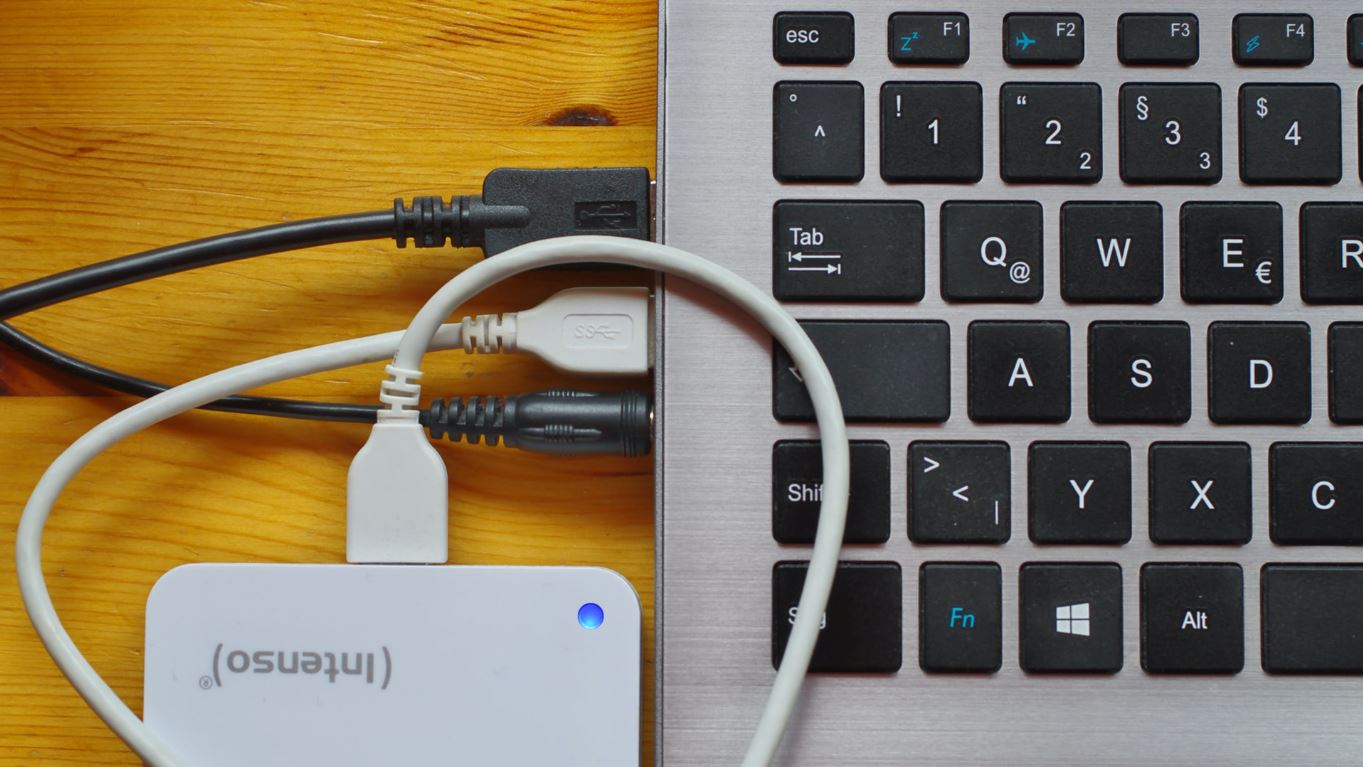Introduction
In today’s interconnected world, it is becoming increasingly common for businesses to have their workstations and servers located in different physical locations. Whether it is for the purpose of remote access, data backup, or disaster recovery, connecting a workstation to a server offsite is essential for seamless communication and collaboration.
This article aims to guide you through the process of connecting a workstation to a server offsite, providing you with the necessary information to establish a secure and reliable connection. By following these steps, you will be able to ensure seamless access to your server and the data it contains, regardless of its physical location.
Before diving into the technicalities, it’s important to have a basic understanding of the connection process and the options available to you. Depending on your specific requirements, you may choose between different connection methods such as virtual private networks (VPNs), remote desktop protocols (RDP), or file transfer protocols (FTP). Each method has its own advantages and considerations that need to be taken into account.
Once you have chosen the most suitable connection method, you will need to configure the network settings on both the workstation and the server. This ensures that they can communicate with each other effectively and securely. The configuration process will involve setting up IP addresses, subnet masks, gateways, DNS settings, and other network parameters.
Establishing a secure connection is of paramount importance. This involves implementing appropriate encryption protocols, strong passwords, and access controls. By taking these measures, you can safeguard your data from unauthorized access and potential security breaches.
Once the connection is established, it is crucial to test its functionality to ensure that the workstation can communicate with the server. Conducting thorough testing will help identify any connectivity issues or performance bottlenecks, allowing you to address them promptly.
In case you encounter any problems during the connection process or face issues with the functionality of the connection, this article will also provide troubleshooting tips to help you resolve common issues.
By the end of this guide, you will have the knowledge and confidence to connect your workstation to a server offsite securely and efficiently. So let’s get started with understanding the basics of the connection process and explore the various options available to you.
Understanding the Basics
Before diving into the technical details of connecting a workstation to a server offsite, it is important to have a clear understanding of the basics. This will help you make informed decisions and troubleshoot any issues that may arise along the way.
First and foremost, it is crucial to understand the concept of offsite servers and their importance in modern business operations. An offsite server refers to a server that is located in a different physical location from the workstation. This separation provides several benefits, such as improved data security, disaster recovery capabilities, and remote access to resources.
To establish a connection between the workstation and the offsite server, you need to choose the appropriate connection method. There are several options available, each with its own strengths and considerations. One popular method is a virtual private network (VPN), which creates a secure and encrypted tunnel over a public network, such as the internet. This allows you to access the offsite server as if you were directly connected to it within the same local network.
Another commonly used method is a remote desktop protocol (RDP), which enables you to control the offsite server’s desktop environment from your workstation. This method is particularly useful when you need full desktop access and the ability to run applications as if you were physically present at the server location.
File transfer protocols (FTP) can also be utilized to connect a workstation to a server offsite. FTP allows you to transfer files between the two devices securely and efficiently, making it an ideal choice for scenarios that involve frequent file sharing or synchronization.
When it comes to configuring the network settings on both the workstation and the server, there are a few key parameters that need to be considered. These include IP addresses, subnet masks, gateways, and DNS settings. The IP address is a unique identifier assigned to each device on the network, while the subnet mask determines which part of the IP address identifies the network and the host. Gateways serve as the link between different networks, allowing for communication between the workstation and the server. DNS settings, on the other hand, translate human-readable domain names into IP addresses, enabling seamless access to websites or other network resources.
Security is a paramount concern when connecting a workstation to a server offsite. It is essential to implement strong encryption protocols, such as SSL/TLS, to protect data in transit. Additionally, using strong passwords, enabling multi-factor authentication, and restricting access based on user roles are crucial measures to prevent unauthorized access to the server.
Now that you have a solid understanding of the basics, you are ready to dive into the specifics of setting up connections and configuring the network settings. The next section will guide you through the step-by-step process of choosing the right connection method and configuring the network settings on both the workstation and the server.
Choosing the Right Connection Method
When connecting a workstation to a server offsite, choosing the right connection method is crucial for a successful and efficient connection. There are several options available, each with its own strengths and considerations. Let’s explore some of the most commonly used connection methods to help you make an informed decision.
One popular connection method is a virtual private network (VPN). A VPN establishes a secure and encrypted connection over a public network, such as the internet. It creates a virtual tunnel between the workstation and the offsite server, ensuring that data transmitted between the two remains private and secure. VPNs offer the benefits of enhanced data security, seamless remote access, and the ability to access resources on the offsite server as if you were directly connected to it within the same local network.
Another commonly used method is remote desktop protocol (RDP). RDP allows you to control the offsite server’s desktop environment from your workstation. It enables you to interact with the server as if you were physically present at its location, providing full access to applications, files, and settings. This method is particularly useful for tasks that require a graphical user interface and the ability to perform actions on the offsite server directly.
File transfer protocols (FTP) can also be used to connect a workstation to an offsite server. FTP allows for the secure transfer of files between the two devices. It is particularly useful when frequent file sharing or synchronization is required. FTP is widely supported and offers the flexibility to transfer files of various types and sizes.
It is important to consider your specific needs and requirements when choosing the connection method. If you require seamless access to resources and a secure connection, a VPN might be the best option. On the other hand, if you need full control of the offsite server’s desktop environment, RDP is a suitable choice. If your primary requirement is file sharing or synchronization, FTP may be the most appropriate method.
Additionally, take into consideration factors such as the level of technical expertise required, compatibility with your workstation and server operating systems, and the availability of required hardware or software for each connection method. It is essential to choose a method that is compatible and user-friendly, ensuring a smooth and hassle-free connection experience.
Once you have decided on the connection method, you can proceed with configuring the network settings on both the workstation and the server. The following section will guide you through the step-by-step process of configuring the network settings to establish a seamless connection between the two devices.
Configuring the Network Settings on the Workstation
Configuring the network settings on the workstation is an essential step in establishing a connection to a server offsite. By correctly setting up the network parameters, you can ensure seamless communication between the workstation and the server. Let’s go through the step-by-step process of configuring the network settings on the workstation.
1. Obtain the necessary network information: Before you begin, gather the required network information such as the IP address, subnet mask, gateway, and DNS settings for the offsite server. This information is typically provided by the network administrator or the server hosting service.
2. Access the network settings: On your workstation, go to the Control Panel or Network and Sharing Center, depending on your operating system. Look for the network settings or network connections section.
3. Configure the IP address: In the network settings, locate the TCP/IP protocol or Internet Protocol version 4 (IPv4) and select it. Choose the option to manually configure the IP address. Enter the specific IP address provided for the workstation, along with the corresponding subnet mask.
4. Set the gateway: Find the gateway option in the network settings and enter the IP address of the offsite server as the gateway. This will allow the workstation to communicate with the server.
5. Configure DNS settings: Locate the DNS settings section and enter the primary and secondary DNS server IP addresses provided. These addresses translate human-readable domain names into IP addresses, allowing you to access websites and other network resources.
6. Save and apply the changes: Once you have entered the necessary network settings, save the changes and apply them. Your workstation will now have the network configuration required to establish a connection with the offsite server.
It is important to note that the exact steps and terminology may vary depending on your operating system and the version of the network configuration interface. If you are unsure about any steps or settings, consider consulting the user manual or seeking assistance from your network administrator or IT support team.
After configuring the network settings on the workstation, you are ready to move on to the next step: configuring the network settings on the server. This will allow the server to recognize and communicate with the workstation, establishing a solid connection between the two devices. The following section will guide you through this process.
Configuring the Network Settings on the Server
Once you have configured the network settings on the workstation, the next step is to configure the network settings on the server. By correctly setting up the network parameters on the server, you will enable seamless communication with the workstation and establish a solid connection. Let’s go through the step-by-step process of configuring the network settings on the server.
1. Access the server’s network settings: Log in to the server using the appropriate credentials and locate the network settings section. The exact location and terminology may vary depending on the server’s operating system and configuration.
2. Obtain the necessary network information: Before proceeding, gather the required network information such as the IP address, subnet mask, gateway, and DNS settings for the server. This information is typically provided by the network administrator or the server hosting service.
3. Configure the IP address: In the network settings, look for the TCP/IP protocol or Internet Protocol version 4 (IPv4) and select it. Choose the option to manually configure the IP address. Enter the specific IP address provided for the server, along with the corresponding subnet mask.
4. Set the gateway: Find the gateway option in the network settings and enter the IP address of the workstation as the gateway. This will enable the server to communicate with the workstation.
5. Configure DNS settings: Locate the DNS settings section and enter the primary and secondary DNS server IP addresses provided. These addresses allow the server to translate domain names into IP addresses, facilitating network communication and access to resources.
6. Save and apply the changes: Once you have entered the necessary network settings, save the changes and apply them. The server will now have the network configuration required to establish a connection with the workstation.
Just like with configuring the network settings on the workstation, it’s important to note that the exact steps and terminology may vary depending on the server’s operating system and configuration. If you are unsure about any steps or settings, consult the server’s documentation or seek assistance from your network administrator or IT support team.
With the network settings configured on both the workstation and the server, you have completed the crucial steps to establish a connection between the two devices. In the next section, we will discuss the importance of establishing a secure connection and the measures you can take to ensure data privacy and protection.
Establishing a Secure Connection
When connecting a workstation to a server offsite, ensuring the security of the connection is of utmost importance. By implementing proper security measures, you can protect sensitive data and prevent unauthorized access. Let’s explore the steps to establish a secure connection between the workstation and the offsite server.
1. Use encryption protocols: Encryption is a critical component of a secure connection. Implement secure encryption protocols, such as SSL/TLS, to encrypt data transmitted between the workstation and the server. This ensures that even if intercepted, the data remains unreadable to unauthorized individuals.
2. Use strong passwords: Establish strong passwords for both the workstation and server accounts involved in the connection. Use a combination of uppercase and lowercase letters, numbers, and special characters. Avoid using easily guessable passwords and ensure regular password updates.
3. Implement access controls: Limit access to the server to only authorized individuals. Set up user accounts with specific privileges and roles, allowing different levels of access based on user requirements. Regularly review and update user access to ensure only those who need access have it.
4. Enable multi-factor authentication: To further enhance security, consider enabling multi-factor authentication for the connection. This adds an extra layer of protection by requiring users to provide additional verification, such as a unique code from a mobile app or a fingerprint scan.
5. Regularly update software and firmware: Keep your workstation and server software up to date with the latest security patches and firmware updates. This helps mitigate vulnerabilities that could be exploited by attackers to gain unauthorized access to your systems.
6. Use a firewall: Implement a firewall on both the workstation and the server to monitor and control incoming and outgoing network traffic. This adds an extra layer of protection by filtering out potentially malicious connections and preventing unauthorized access to your network.
7. Monitor and log network activity: Monitor network activity on both the workstation and the server to detect and respond to any suspicious or unauthorized access attempts. Implement logging mechanisms to track and record network activity for later analysis.
8. Regularly audit security measures: Conduct periodic security audits to evaluate the effectiveness of your security measures. Identify any weaknesses or vulnerabilities and take appropriate actions to address them.
By implementing these security measures, you can establish a secure connection between your workstation and the offsite server. However, it is important to regularly review and update your security measures as technology and threats evolve. Additionally, ensure that all users accessing the connection are aware of and adhere to best practices for maintaining a secure environment.
Now that you have established a secure connection, it is important to test its functionality. The next section will guide you through the process of testing the connection to ensure seamless communication between the workstation and the server.
Testing the Connection
After configuring the network settings and establishing a secure connection between your workstation and the offsite server, it is important to test the connection to ensure that it is functioning properly. Testing allows you to verify that communication between the two devices is seamless and that you can access the necessary resources. Let’s explore the steps involved in testing the connection.
1. Ping test: Use the ping command from the command prompt or terminal to test the connectivity between the workstation and the server. By sending a ping request, you can determine if there is a response from the server. If you receive a response, it indicates that the connection is established. However, if there is no response, there may be an issue with the network settings or firewall configurations.
2. File transfer test: Attempt to transfer a small test file between the workstation and the server. Whether using FTP or another file transfer method, this test will confirm if data can be successfully transferred between the devices. If the file transfer is successful, it indicates that the connection is working properly and that you can exchange data with the server. If the transfer fails, there may be issues with the connection settings, authentication credentials, or access permissions.
3. Application access test: If your connection method allows for remote desktop access or access to specific applications on the server, perform a test to ensure that you can connect to and utilize these resources. Launch the required application or establish a remote desktop connection to the server and verify that you can interact with the server’s resources as intended. If the application or remote desktop connection works as expected, it confirms that the connection is functional and that you have access to the desired resources.
4. Bandwidth and performance test: Test the connection’s speed and performance by running a bandwidth test. This will give you an idea of the connection’s capabilities and whether it meets your requirements. Various online tools are available for conducting bandwidth tests, which measure the upload and download speeds between the workstation and the server. If the results match or exceed your expectations, it demonstrates that the connection is operating efficiently. If the results are below expectations, there could be underlying network issues that need to be addressed.
By conducting these tests, you can ensure that the connection between your workstation and the offsite server is functioning properly and meeting your requirements. It is recommended to perform regular tests, especially after any network or configuration changes, to catch any issues early and ensure a reliable connection going forward.
If you encounter any issues during the testing process or experience difficulties with the functionality of the connection, don’t hesitate to troubleshoot or seek assistance. The next section will provide some common troubleshooting tips to help you address common issues that may arise during the connection process.
Troubleshooting Common Issues
While setting up a connection between a workstation and a server offsite, you may encounter common issues that can hinder a seamless connection. It is important to be prepared to troubleshoot these issues in order to resolve them promptly and ensure a stable connection. Let’s explore some common issues and troubleshooting tips to help you overcome them.
1. Incorrect network settings: Verify that the IP addresses, subnet masks, gateways, and DNS settings on both the workstation and the server are correctly entered. A simple typo or misconfiguration can disrupt the connection. Double-check the network settings and compare them against the provided information to ensure accuracy.
2. Firewall restrictions: Firewalls can sometimes block or restrict network traffic, causing connectivity issues. Check the firewall settings on both the workstation and the server to ensure that the necessary ports and protocols required for the connection are allowed. Create exceptions or rules to specifically permit traffic between the two devices if needed.
3. Network congestion: If the connection is slow or intermittent, there may be network congestion issues. Check the network bandwidth during peak hours when multiple users might be accessing the network. Consider prioritizing or allocating sufficient bandwidth for the connection between the workstation and the offsite server to ensure optimal performance.
4. Authentication errors: If you are unable to authenticate or log in to the offsite server, double-check the login credentials. Ensure that the username and password are correct and that the user account is properly configured to access the server remotely. If necessary, reset the password or contact the system administrator for assistance.
5. Software compatibility issues: Incompatibility between the workstation and server software can cause connection problems. Ensure that you are using the latest versions of the software and that they are compatible with each other. Review the system requirements and check for any software updates or patches that may address compatibility issues.
6. Interference from other applications or devices: Other applications or devices on the network can sometimes interfere with the connection. Check for any conflicting applications or devices that may be sending or receiving excessive network traffic. Temporarily disable or close unnecessary applications and ensure that other devices are not causing network congestion or interference.
7. Network hardware issues: Faulty network cables, routers, switches, or other networking hardware can cause connectivity problems. Check the physical connections and ensure that all hardware devices are functioning properly. Replace any faulty equipment if necessary.
8. Internet or service provider issues: If the connection issues persist despite troubleshooting, it may be a problem with the internet service provider (ISP). Contact the ISP to determine if there are any known issues in your area or if they can assist with troubleshooting the connection from their end.
By following these troubleshooting tips, you can identify and address common issues that may arise during the connection process. It is important to stay patient and methodical in troubleshooting, ensuring that each step is thoroughly checked before moving on. If the issue persists or if you require further assistance, don’t hesitate to seek help from your network administrator or IT support team.
Conclusion
Connecting a workstation to a server offsite is a crucial aspect of modern business operations. Through this guide, we have explored the necessary steps and considerations to ensure a secure and reliable connection between the two devices. By understanding the basics of offsite servers, choosing the right connection method, configuring the network settings, establishing a secure connection, testing its functionality, and troubleshooting common issues, you are well-equipped to successfully connect your workstation to a server offsite.
Remember to choose the connection method that best suits your needs, considering factors such as security, access requirements, and file transfer capabilities. Properly configuring the network settings on both the workstation and the server is essential for seamless communication. Focus on implementing strong security measures, such as encryption protocols, strong passwords, and access controls, to safeguard your data from unauthorized access.
Testing the connection and conducting regular checks will help ensure its reliability, while troubleshooting common issues empowers you to resolve any problems that may arise. If troubleshooting becomes challenging or if you encounter technical difficulties, seek assistance from your network administrator or IT support team.
With a secure and reliable connection established, you can benefit from remote access, data backup capabilities, and streamlined collaboration. Keep your connection and security measures up to date, regularly reviewing and updating them as needed. By following these guidelines, you can confidently connect your workstation to a server offsite and leverage the advantages it brings to your business operations.

























